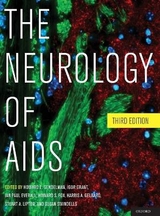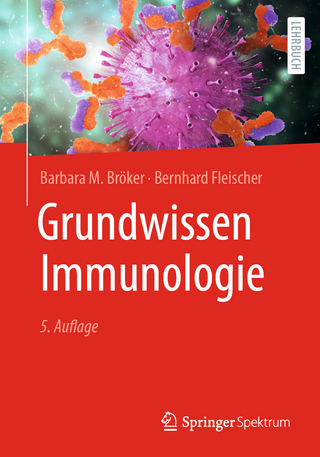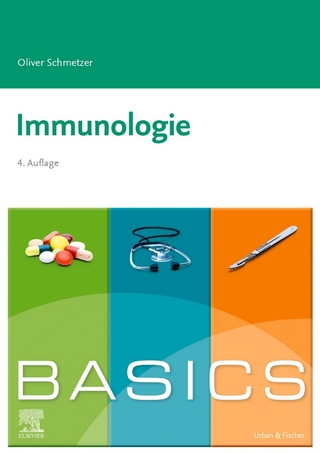
The Neurology of AIDS
Oxford University Press (Verlag)
978-0-19-852610-0 (ISBN)
- Titel erscheint in neuer Auflage
- Artikel merken
This book is a comprehensive textbook of the neurological, behavioural, motor, sensory, cognitive, psychiatric, developmental and basic research performed on HIV-1 infection of the nervous system. The contributors represent some of the foremost clinical and basic science investigators in the field of NeuroAIDS worldwide. Particular emphasis is placed on current thinking with regard to disease pathogenesis, patient care, and the prospects for the future. Human immunodeficiency virus, type 1 (HIV-1) infection can often lead to a number of neurological events including peripheral neuropathy, myopathy, vacuolar myelopathy; and cognitive, motor and behaviour abnormalities. The mechanisms by which the virus invades the nervous system and induces neurological deficits are the focal points of this book. Such topics are covered from the laboratory bench to the patient bedside. Considerable emphasis is placed in how research is performed at the molecular, cellular, animal model and patient levels. The work includes considerable emphasis on the epidemiology, psychological and psychiatric aspects of the disease complex.
A complete section on the clinical aspects of disease is included, as a first time effort using patients to describe disease manifestations rather than physicians or researchers. The emerging new fields of genomics and proteomics have begun to better define the host factors that permit active viral production in the brain as well as lead to a secretion of a plethora of inflammatory and cytotoxic factors that lead to neuronal injury and subsequent death. Such processes not only define AIDS Neurology but also are the underbelly of most neurodegenerative disorders including, but not limited to, Alzheimer's and Parkinson's disease, amyotrophic lateral sclerosis and Huntington s disease. Significant advances in antiretroviral viral therapy have markedly diminished the incidence of HIV-1 associated dementia (HAD) while peripheral neuropathy remains a common disorder. Neuropsychological methods to monitor cognitive impairments are more precise, and as patients live longer with disease more subtle neurological manifestations of disease have emerged. Incredible advances in studies of viral neuropathogenesis, diagnostics, and therapeutics for HAD and much more are covered in the book.
A number of germane questions have been addressed in a comprehensive manner including issues relating to HIV-1 neurovirulence and neurotropism, cellular factors influencing viral replication, therapeutic challenges, and the changing epidemiological patterns of disease including peripheral neuropathy.
Overview: a panel discussion, critical topics in the neurology of AIDS; SECTION 1: HIV-1 BIOLOGY, IMMUNOLOGY AND NEUROVIRULENCE; 1.1 The molecular biology of HIV-1; 1.2 Immunology of HIV-1; 1.3 HIV-1 structural and regulatory proteins and neurotoxicity; 1.4 The genetics of HIV-1 neuropathogenesis; SECTION 2: INNATE AND ACQUIRED IMMUNITY IN HIV-1 DEMENTIA; 2.1 Mononuclear phagocyte heterogeneity and the blood-brain barrier: A model for HIV-1 neuropathogenesis; 2.2 Common immune pathways of neural injury in neurodegenerative disorders; 2.3 HIV-1 vaccines; SECTION 3: THE BLOOD-BRAIN BARRIER AND HIV-1; 3.1 The blood-brain barrier, its structure and function; 3.2 The blood-brain barrier as an immunocompetent organ; 3.3 Viral receptors and the mechanisms of HIV-1 entry into cells and the central nervous system; 3.4 Mechanisms of viral entry through the blood-brain barrier; 3.5 The blood-brain barrier: monocyte and viral entry into the brain; 3.6 The choroid plexus and viral entry into the brain; SECTION 4: MECHANISMS OF NEUROTOXICITY BY HIV-1 AND CELLULAR IMMUNE PRODUCTS; 4.1 Mechanisms of macrophage-mediated neurotoxicity; 4.2 Chemokines, HIV-1 and the central nervous system; 4.3 Mechanisms of neuronal demise in HIV dementia: role of HIV-1 tat; 4.4 Protection against HIV-1gp120 and HIV-1 tat neurotoxicity; 4.5 Astrocyte immunobiology; 4.6 Transcriptional analysis of inflammatory and glial responses in the central nervous system: development of RNA fingerprints for neuroAIDS and other central nervous system disorders; 4.7 Neurogenesis and its links to brain development, developmental therapeutics, and the pathogenesis of neurodegenerative disorders including HIV-1-associated dementia; SECTION 5: ANIMAL MODEL SYSTEMS; 5.1 The simian immunodeficiency virus/macaque model: detailing viral weapons and host defenses in HIV central nervous system disease; 5.2 The feline immunodeficiency virus model of HIV-1 associated neurologic disease; 5.3 Neurologic disease produced by maedi-visna and caprine arthritis-encephalitis viruses, lentiviruses of sheep and goats; 5.4 Murine model systems for studies of HIV-1 associated dementia; 5.5 Studies of adaptive immunity in a murine model of HIV-1 encephalitis; 5.6 Laboratory model systems of drug abuse and their relevance to HIV infection and dementia; SECTION 6: LIVING WITH HIV AND AIDS (CLINICAL PERSPECTIVES FROM PATIENTS LIVING WITH THE NEUROLOGICAL CONSEQUENCES OF HIV INFECTION); 6.1 HIV dementia: living with the suffering, the diagnosis and the uncertainties; 6.2 Neurological manifestations of HIV disease; 6.3 Coping with depression; 6.4 Living with families with HIV in an African community: a mental health point of view; 6.5 HIV and sexual dysfunction: a patient's view; SECTION 7: CLINICAL AND PATHOLOGICAL ASPECTS OF DISEASE; 7.1 An overview of the clinical and biologic features of the AIDS dementia complex; 7.2 HIV Neurocognitive disorders; 7.3 The neuropathology of HIV-associated brain disease; 7.4 Brain pathology in HIV-1 infected drug abusers; 7.5 Current concepts in HIV neuropathogenesis: neuronal injury, white matter disease and neurotrophic factors; 7.6 Spinal cord disease: clinical presentations and pathology; 7.7 The spectrum of peripheral neuropathies in AIDS; 7.8 The neuropathology of HIV-related neuropathies; 7.9 Myopathies associated with HIV-1: clinical and pathological manifestations; 7.10 Human polyomavirus, JCV and progressive multifocal leukoencephalopathy; 7.11 Central nervous system neoplasms in AIDS; 7.12 Opportunistic infections of the nervous system in AIDS; 7.13 Hepatitis C; 7.14 Alcohol and HIV-1 neuropathogenesis; 7.15 Psychiatric disorders; SECTION 8: DIAGNOSTIC METHODS FOR MONITORING COGNITIVE FUNCTION IN NEUROAIDS; 8.1 Structural brain imaging; 8.2 Magnetic resonance spectroscopy of animal models of neuroAIDS; 8.3 Magnetic resonance spectroscopy and functional magnetic resonance imaging in the evaluation of HIV-associated brain injury; 8.4 Evoked potentials; 8.5 Neuropsychology of HIV; 8.6 The effects of antiretroviral therapy on viral and non-viral markers in cerebrospinal fluid; 8.7 Compartmentalization of HIV infection in the central nervous system; SECTION 9: HIV-1 ENCEPHALOPATHY: UNIQUE ASPECTS IN CHILDREN AND ADOLESCENTS; 9.1 Clinical features; 9.2 Neuropathologic aspects of HIV-1 infection in children; 9.3 Evaluation of neurodevelopmental deficits in children with HIV-1 infection; 9.4 Psychosocial aspects of neurologic impairment in children with AIDS; 9.5 Antiretroviral therapy in children; SECTION 10: ANTIRETROVIRAL AND ADJUNCTIVE DRUG STRATEGIES FOR NEUROAIDS AND TREATMENT FOR OPPORTUNISTIC INFECTIONS; 10.1 Current concepts in the treatment of HIV infection with focus on brain disease; 10.2 Treatment of opportunistic infections associated with HIV infection; 10.3 Pharmacology of antiretroviral drug in the central nervous system: pharmacokinetics, antiretroviral resistance, and pharmacodynamics; 10.4 Development of adjunctive therapies for the neurological manifestations of AIDS: Dementia and painful neuropathy; SECTION 11: SOCIAL AND BEHAVIOURAL CONSEQUENCES OF HIV-INFECTION; 11.1 Everyday impact of HIV-associated neurocognitive disorders; 11.2 Coping, methamphetamine, and HIV-1; 11.3 Club drugs and HIV transmission; 11.4 Facing legal and ethical challenges in the treatment of AIDS; 11.5 AIDS-related death anxiety: A research review and clinical recommendations; 11.6 Clinical-neuropathological correlation in HIV in the era of highly active antiretroviral therapy; 11.7 Pain management in HIV infection
| Erscheint lt. Verlag | 10.3.2005 |
|---|---|
| Zusatzinfo | numerous halftones, colour plates, tables and line drawings |
| Verlagsort | Oxford |
| Sprache | englisch |
| Maße | 216 x 279 mm |
| Gewicht | 2810 g |
| Themenwelt | Medizin / Pharmazie ► Medizinische Fachgebiete ► Neurologie |
| Studium ► Querschnittsbereiche ► Infektiologie / Immunologie | |
| ISBN-10 | 0-19-852610-5 / 0198526105 |
| ISBN-13 | 978-0-19-852610-0 / 9780198526100 |
| Zustand | Neuware |
| Haben Sie eine Frage zum Produkt? |
aus dem Bereich



